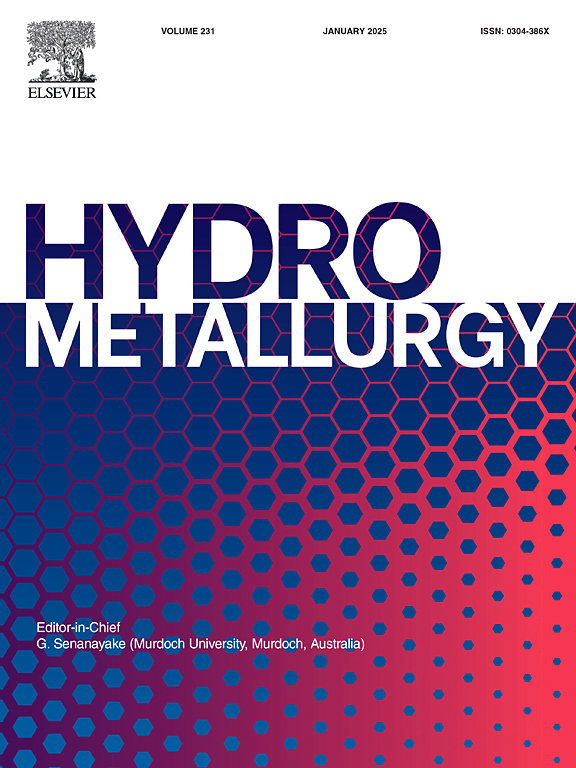Pilot plant study on manganese bioleaching using biomass decomposition products as a nutrient source and electrolysis for oxide precipitation
IF 4.8
2区 材料科学
Q1 METALLURGY & METALLURGICAL ENGINEERING
引用次数: 0
Abstract
Manganese leaching was carried out on a small pilot scale with 110 kg of ore using manganese-reducing organisms and fermentative organisms with biomass (Typha latifolia) as the source of nutrition. This study was carried out without externally supplied chemical reagents and with minimal capital investment. The process involves fermentative organisms to ferment biomass from T. latifolia and generate organic acids. Manganese-reducing organisms and organic acids reduced and dissolved manganese from pyrolusite ore. Manganese was precipitated from the manganese-bearing solution using an electrolytic oxidation technique.
A manganese concentration above 500 mg/L and negligible dissolved iron was achieved at a flow rate of 30 L/day, maintaining a pH range of 4 to 5, and a redox potential between 0.10 and 0.46 V. Manganese oxide was produced at a rate of 12 g/day, with a purity of 90 %. Amorphous manganese oxide was deposited on the cathode, while crystalline manganese oxide formed on the anode.

以生物质分解产物为营养源,电解沉淀锰的生物浸出中试研究
以110公斤矿石为原料,利用锰还原生物和生物质发酵生物(Typha latifolia)作为营养来源,进行了小规模的锰浸出试验。这项研究是在没有外部供应的化学试剂和最小的资本投资的情况下进行的。这一过程涉及到发酵生物发酵来自T. latifolia的生物质并产生有机酸。锰还原生物和有机酸对软锰矿中的锰进行还原和溶解。采用电解氧化技术从含锰溶液中析出锰。在30 L/天的流速下,锰浓度超过500 mg/L,溶解铁可以忽略不计,pH范围为4至5,氧化还原电位在0.10至0.46 V之间。氧化锰的生产速度为12克/天,纯度为90%。无定形氧化锰沉积在阴极上,而结晶氧化锰形成在阳极上。
本文章由计算机程序翻译,如有差异,请以英文原文为准。
求助全文
约1分钟内获得全文
求助全文
来源期刊

Hydrometallurgy
工程技术-冶金工程
CiteScore
9.50
自引率
6.40%
发文量
144
审稿时长
3.4 months
期刊介绍:
Hydrometallurgy aims to compile studies on novel processes, process design, chemistry, modelling, control, economics and interfaces between unit operations, and to provide a forum for discussions on case histories and operational difficulties.
Topics covered include: leaching of metal values by chemical reagents or bacterial action at ambient or elevated pressures and temperatures; separation of solids from leach liquors; removal of impurities and recovery of metal values by precipitation, ion exchange, solvent extraction, gaseous reduction, cementation, electro-winning and electro-refining; pre-treatment of ores by roasting or chemical treatments such as halogenation or reduction; recycling of reagents and treatment of effluents.
 求助内容:
求助内容: 应助结果提醒方式:
应助结果提醒方式:


